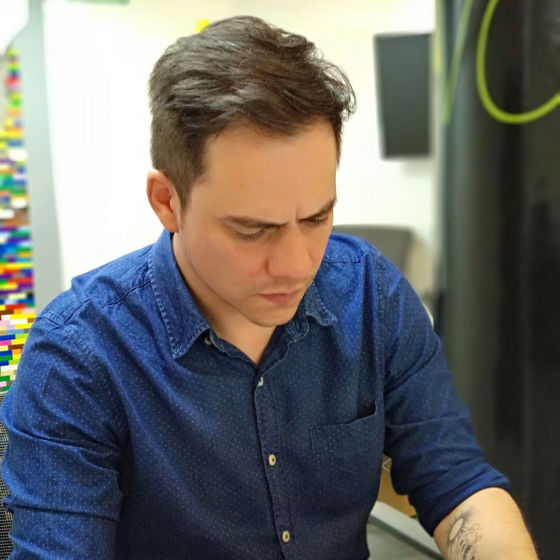Web Design for Usability v1
Usability and probability are two sides of the same coin. Simple improvements in usability can greatly increase the probability that your e-commerce site will be a success. Alas, the opposite is also true! It is therefore crucial that any designer consider usability early on in the design process, with such knowledge also applicable to wider contexts such as improving productivity and job satisfaction in the working environment.
As Forrester Research puts it:
“Usability goals are business goals. Web sites that are hard to use frustrate customers, forfeit revenue, and erode brands. Executives can apply a disciplined approach to improve all aspects of ease-of-use. Start with usability reviews to assess specific flaws and understand their causes. Then fix the right problems through action-driven design practices. Finally, maintain usability with changes in business processes.”1
As you may have deduced by now, the realm of usability extends far below what you see on the surface. And what we want to see on the surface has proved to be an ongoing temptation for all too many of us as designers. Constructing an awesome-looking site isn’t the same as creating an awesome site—at least, it’s not in the sense that you can end up with a beautifully sophisticated design that crashes moments after users sit down to interact with it. Happily, you can—and should—aim to have an awesome site that looks awesome, too.
Getting to the nub of usability issues as soon as you notice them—or, better still, as soon as you notice their potential to upset your work before the fact—means saving yourself many a headache further down the development line. The old expression “forewarned is forearmed” is more than relevant in this market. That’s why we have put everything you need in here to help you keep your work optimized for usability.
“Web Design for Usability” is a course built on evidence-based approaches, as well as solid evidence, distilled from over 40 years of experience in the development of interactive systems. The course is taught by the founder and principal consultant of Syntagm, William Hudson, who is also a distinguished writer and teacher in the fields of user-centered design, user experience, and usability.
What you will learn
- The principles of user-centered design and how they improve usability
- How to evaluate the effectiveness and usability of alternative designs
- An appreciation for clear, conceptual models and early design
- The importance of users in the design process
- Basic usability and accessibility guidelines
Who should take this course
This is a beginner-level course suitable for newcomers and experienced practitioners alike:
- UX designers who want to create outstanding websites that are free from usability flaws
- Project managers keen on building user-centered products that stand out from the competition
- Software engineers interested in augmenting their development skills with a firm grounding in usability
- Entrepreneurs looking to ship products that are free from usability flaws and thus succeed
- Newcomers to design who are considering making a switch to UX design
Courses in the Interaction Design Foundation are designed to contain comprehensive, evidence-based content, while ensuring that the learning curve is never too steep. All participants will have the opportunity to share ideas, seek help with tests, and enjoy the social aspects afforded by our open and friendly forum.
Learn and work with a global team of designers
When you take part in this course, you will join a global multidisciplinary team working on the course and the exercises at the same time as you. You will work together to improve your skills and understanding. Your course group will be made up of an incredibly diverse group of professionals, all of whom have the same objective—to become successful designers. It’s your chance to learn, grow, and network with your peers across the planet.
1 Why Most Web Sites Fail, Forrester Research,
1998
Gain an Industry-Recognized UX Course Certificate
Use your industry-recognized Course Certificate on your resume, CV, LinkedIn profile or your website.

Our courses and Course Certificates are trusted by these industry leaders:

Course Overview: What You'll Master
- Each week, one lesson becomes available.
- There's no time limit to finish a course. Lessons have no deadlines.
- Estimated learning time: 9 hours 51 mins spread over 6 weeks.
Lesson 0: Welcome and Introduction
To be scheduled. Estimated time to complete: 1 hour 44 mins.
-
0.1: An Introduction to Courses from IxDF (37 mins)
-
0.2: Get Help, Career Advice, and Job Opportunities (6 mins)
-
0.3: How to Get Your Course Certificate (19 mins)
-
0.4: Grow Your Global Network and Build Your Brand (12 mins)
-
0.5: Global Skills, Local Jobs: Build Your Network in Your Area (2 mins)
-
0.6: Get Timeless Skills with Courses from IxDF (21 mins)
-
0.7: Mandatory vs Optional Lesson Items (7 mins)
-
0.8: Learn Smarter: The Perfect Mix of Video and Text (5 mins)
Lesson 1: Interaction Model
To be scheduled. Estimated time to complete: 2 hours 2 mins.
-
1.1: Interaction model (59 mins)
-
1.2: Goal mapping (24 mins)
-
1.3: Navigational aids (35 mins)
-
1.4: Community-based learning and networking (6 mins)
Lesson 2: Users
To be scheduled. Estimated time to complete: 2 hours 55 mins.
-
2.1: Users (1 hour 9 mins)
-
2.2: Personas (44 mins)
-
2.3: Hierarchical cluster analysis (43 mins)
-
2.4: Paper prototyping (16 mins)
-
2.5: Community-based learning and networking (6 mins)
Lesson 3: Navigation and Content
To be scheduled. Estimated time to complete: 2 hours 1 min.
-
3.1: Navigation and content (1 hour 26 mins)
-
3.2: Content (30 mins)
-
3.3: Community-based learning and networking (6 mins)
Lesson 4: Visual Design
To be scheduled. Estimated time to complete: 2 hours 53 mins.
-
4.1: Visual Design (1 hour 13 mins)
-
4.2: Layout (47 mins)
-
4.3: Forms and data (50 mins)
-
4.4: Community-based learning and networking (6 mins)
Lesson 5: IxDF Course Certificate and Course Wrap-up
To be scheduled. Estimated time to complete: 12 mins.
-
0.1: How to Add Your IxDF Certificate to LinkedIn (6 mins)
-
0.2: Help Us Help You: Course Evaluation (4 mins)
-
0.3: Six Steps to Your Career Success (3 mins)
-
0.4: Get Your IxDF Course Certificate (2 mins)
How Others Have Benefited

Dirck Ten Broeck, Mexico
“This lesson was one of the best, the form layout is a very hard task when we are designing, sometimes, we think that users are going to understand the form in the same way we understand it, but with this kind of examples I can see now what are some of my mistakes . Very, very helpful. Thanks.”

Salvatore Salvo, Italy
“This course is one of the best out there. The breadcrumb lines lesson is very useful, I have to admit I didn't realize the impact of this technique.”

Christoph Kloecking, Germany
“I especially appreciated the part about the user stories vs persona stories as I have found myself struggling to write good user stories for the reasons mentioned. However, the processes that had been implemented in that business required user stories. I am quite confident that with the arguments from these lessons I can achieve a shift towards persona centre story writing which will hopefully improve the developers understanding of the stories leading to a better product.”
How It Works
-
Take online courses by industry experts
Lessons are self-paced so you'll never be late for class or miss a deadline.
-
Get a Course Certificate
Your answers are graded by experts, not machines. Get an industry-recognized Course Certificate to prove your skills.
-
Advance your career
Use your new skills in your existing job or to get a new job in UX design. Get help from our community.
Start Advancing Your Career Now
Join us to take “Web Design for Usability v1”. Take other courses at no additional cost. Make a concrete step forward in your career path today.
Advance my career now